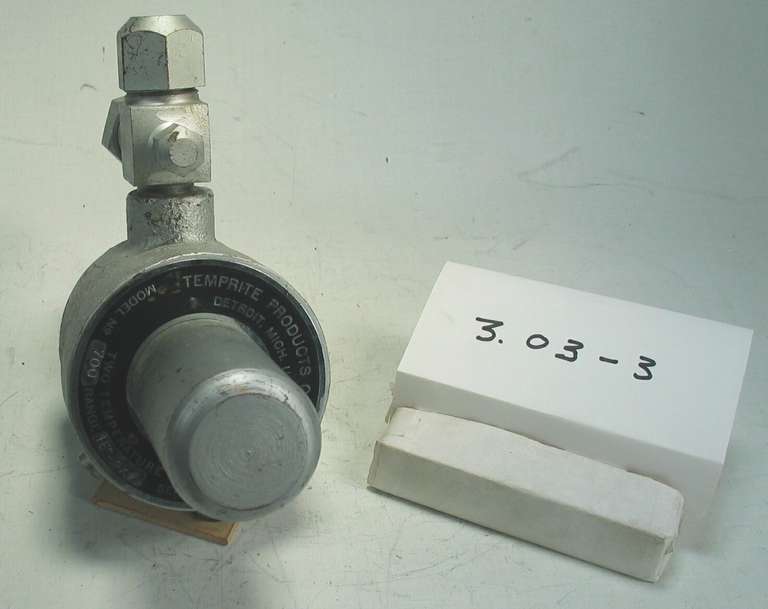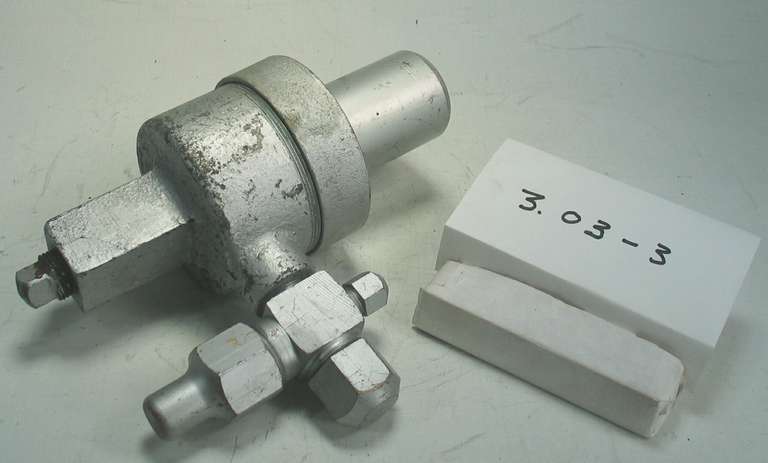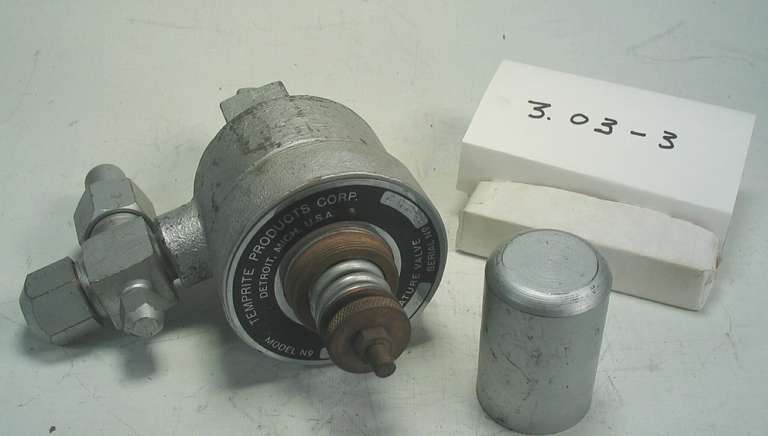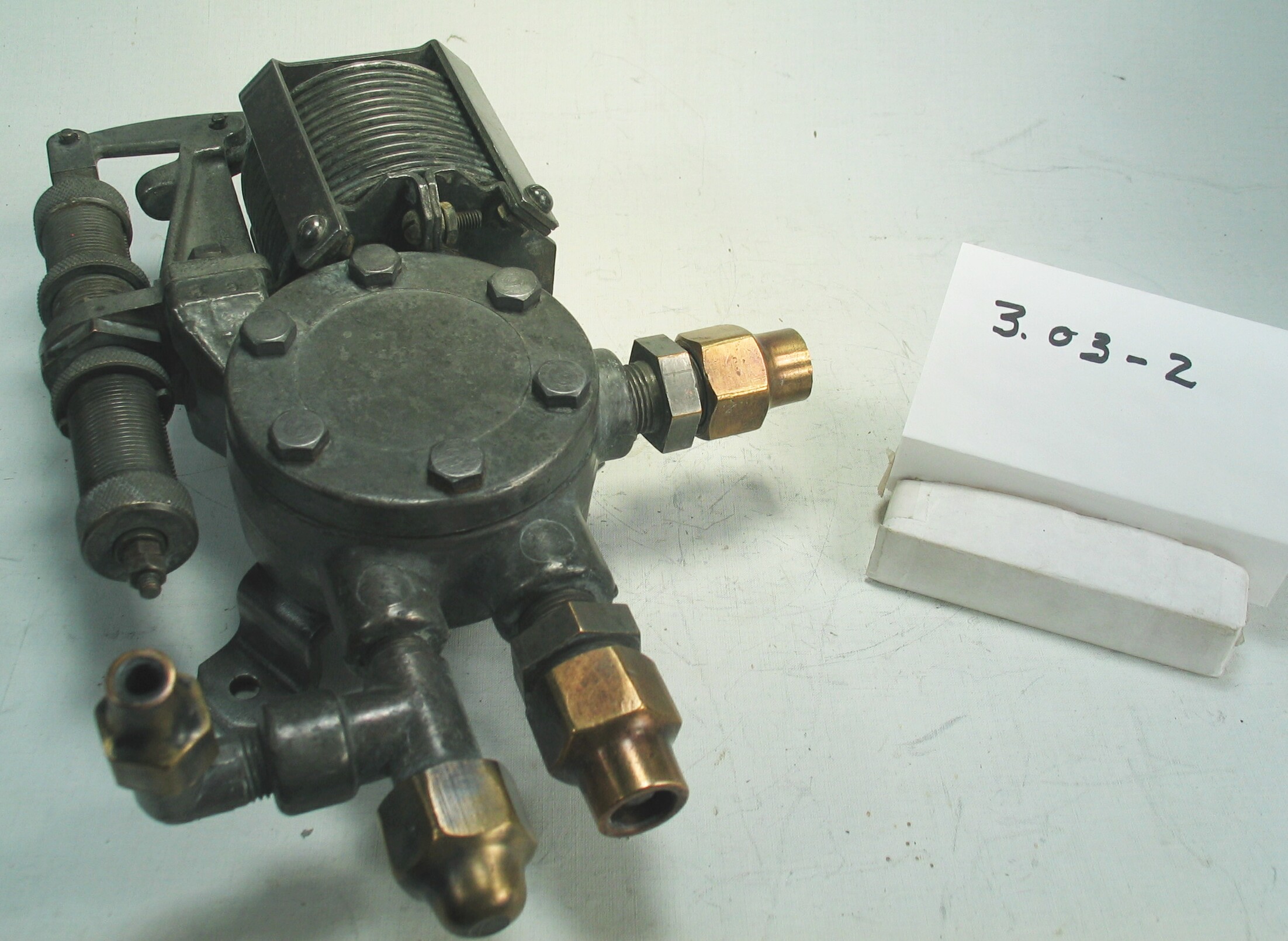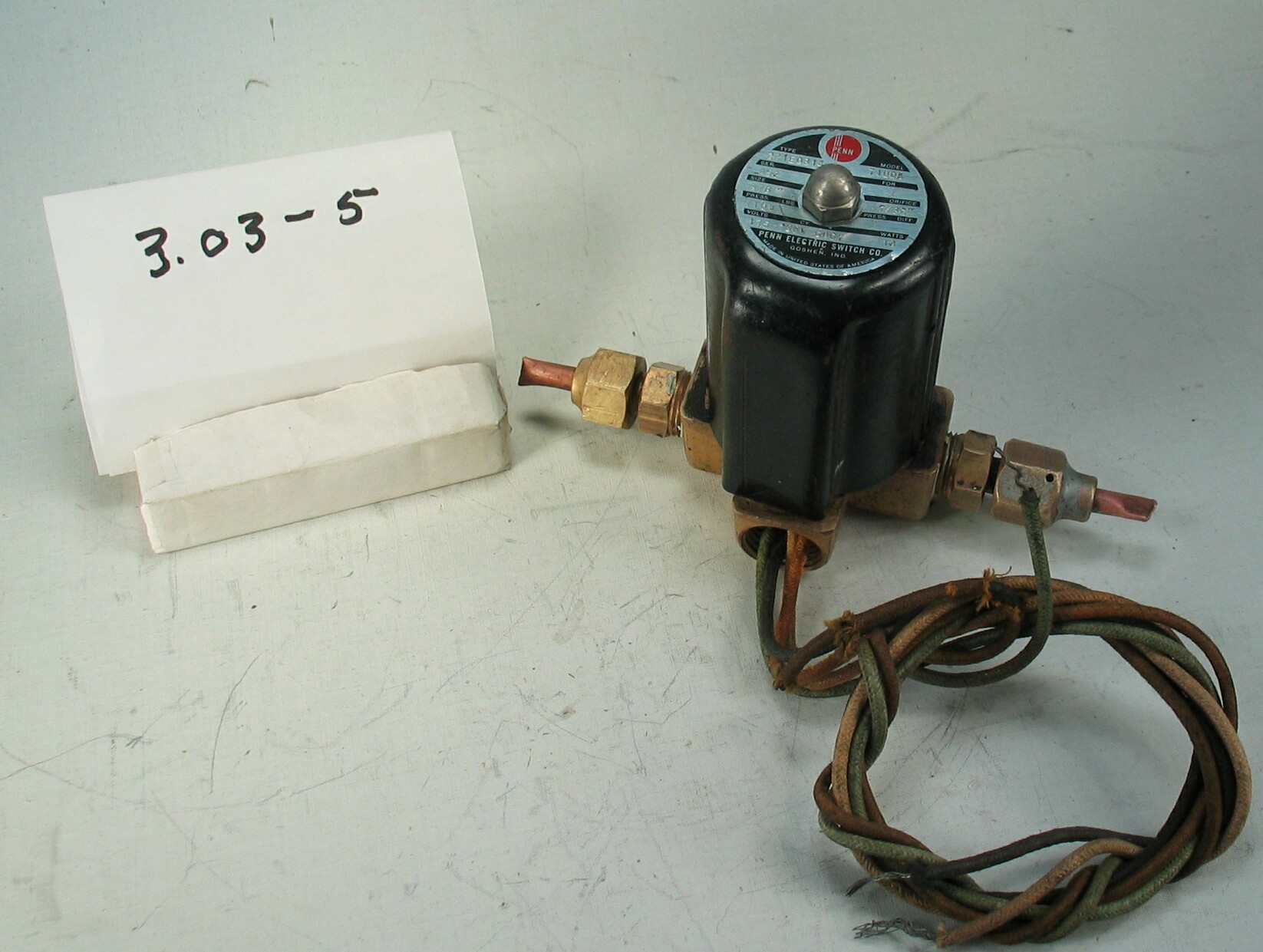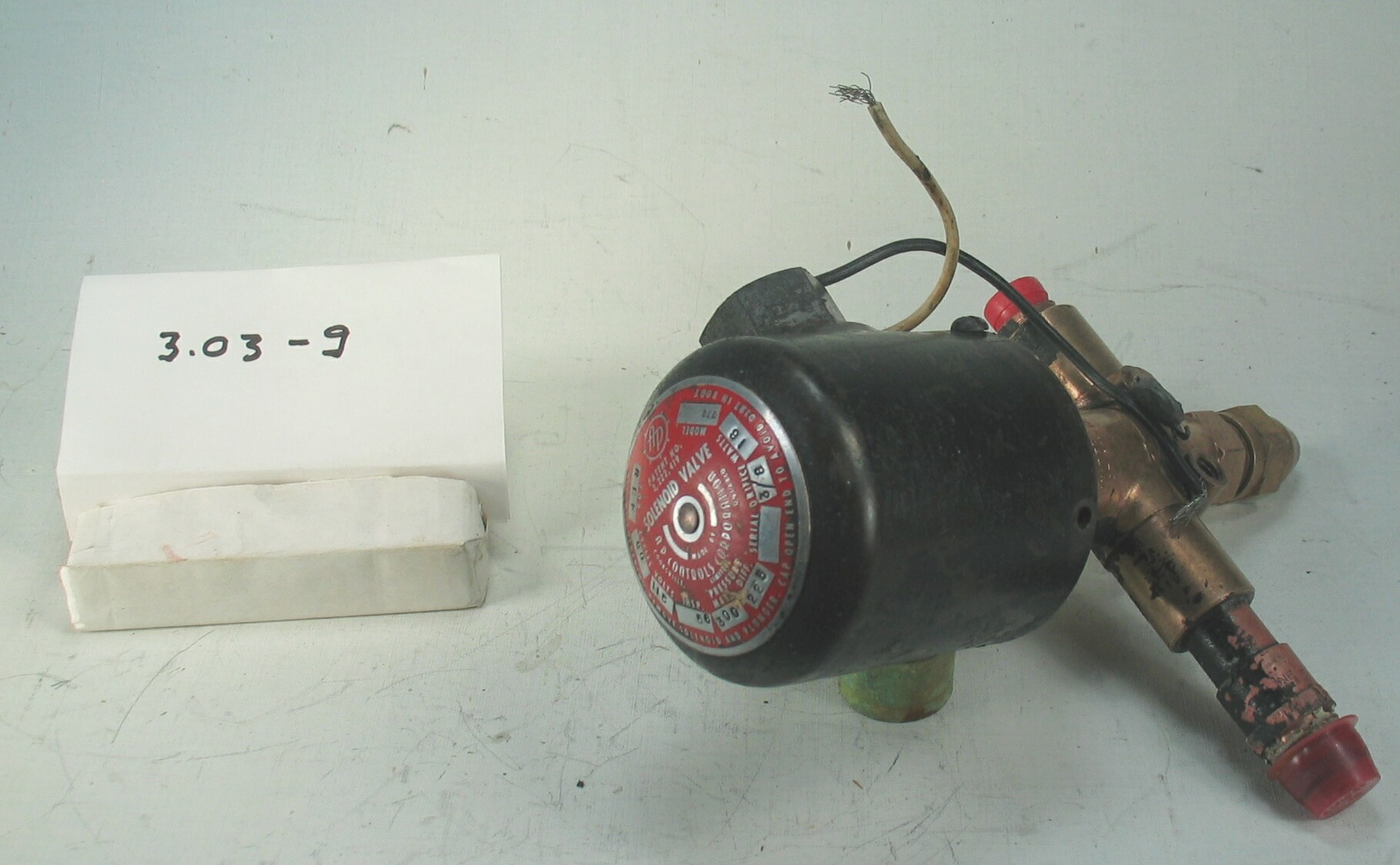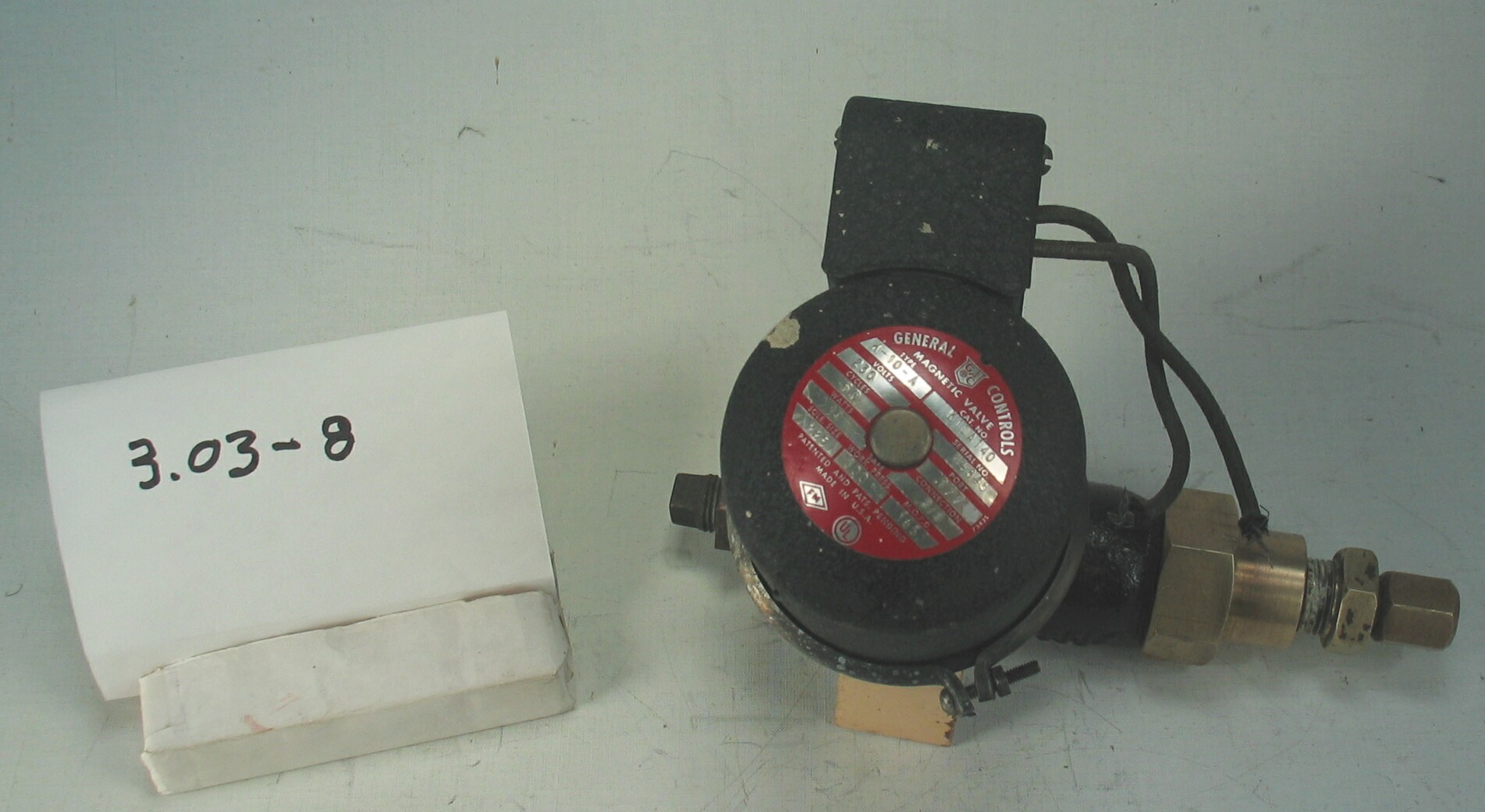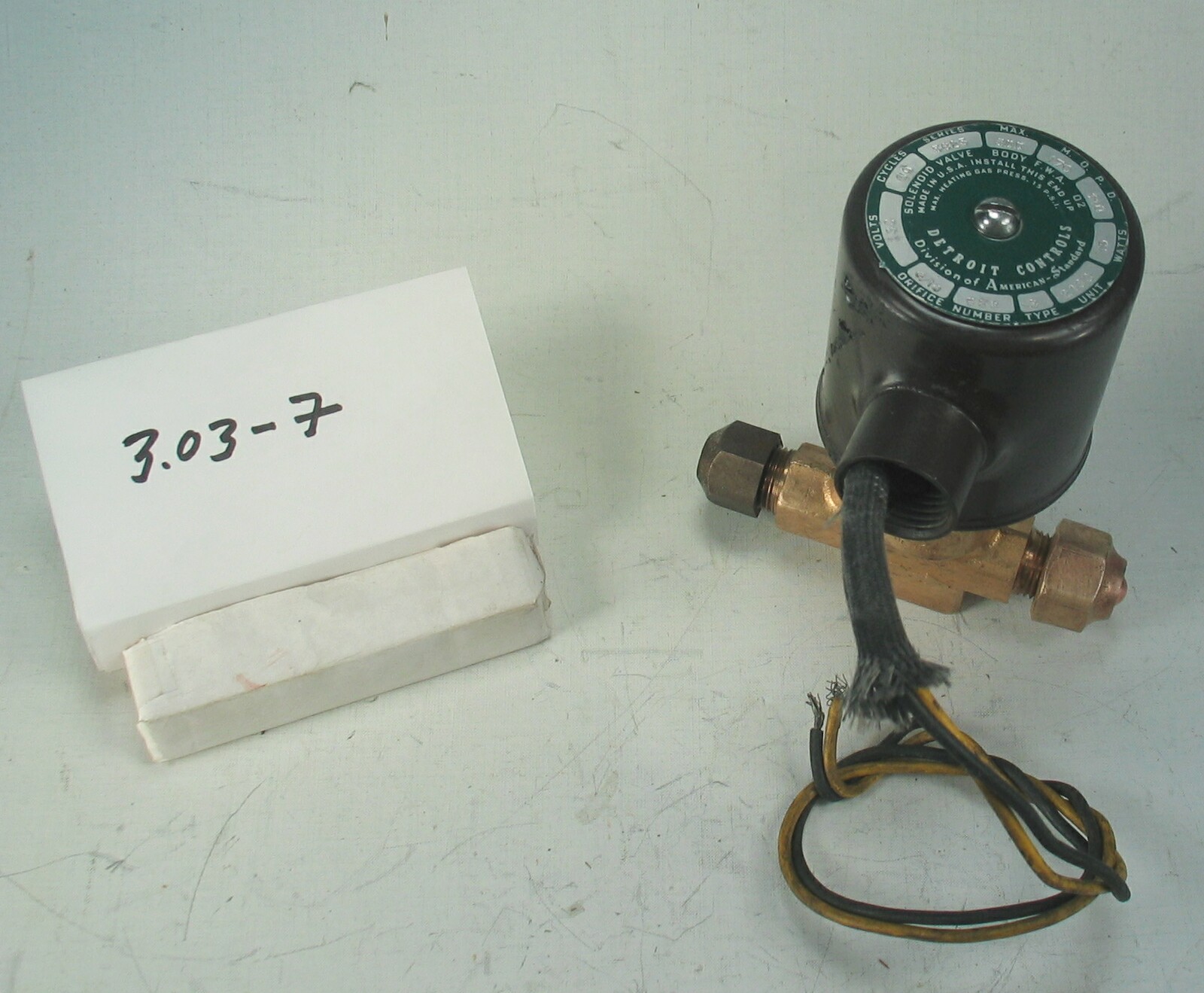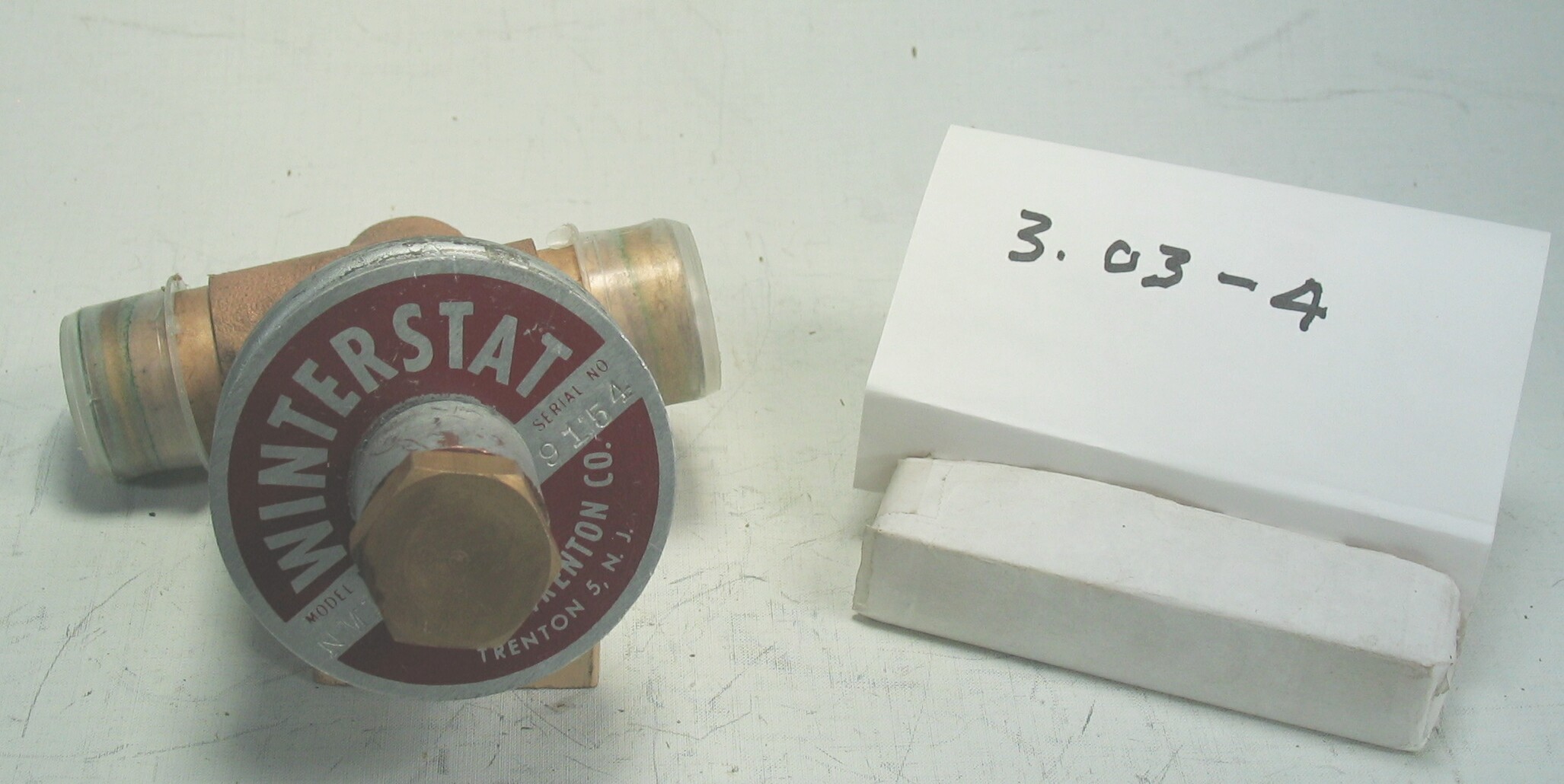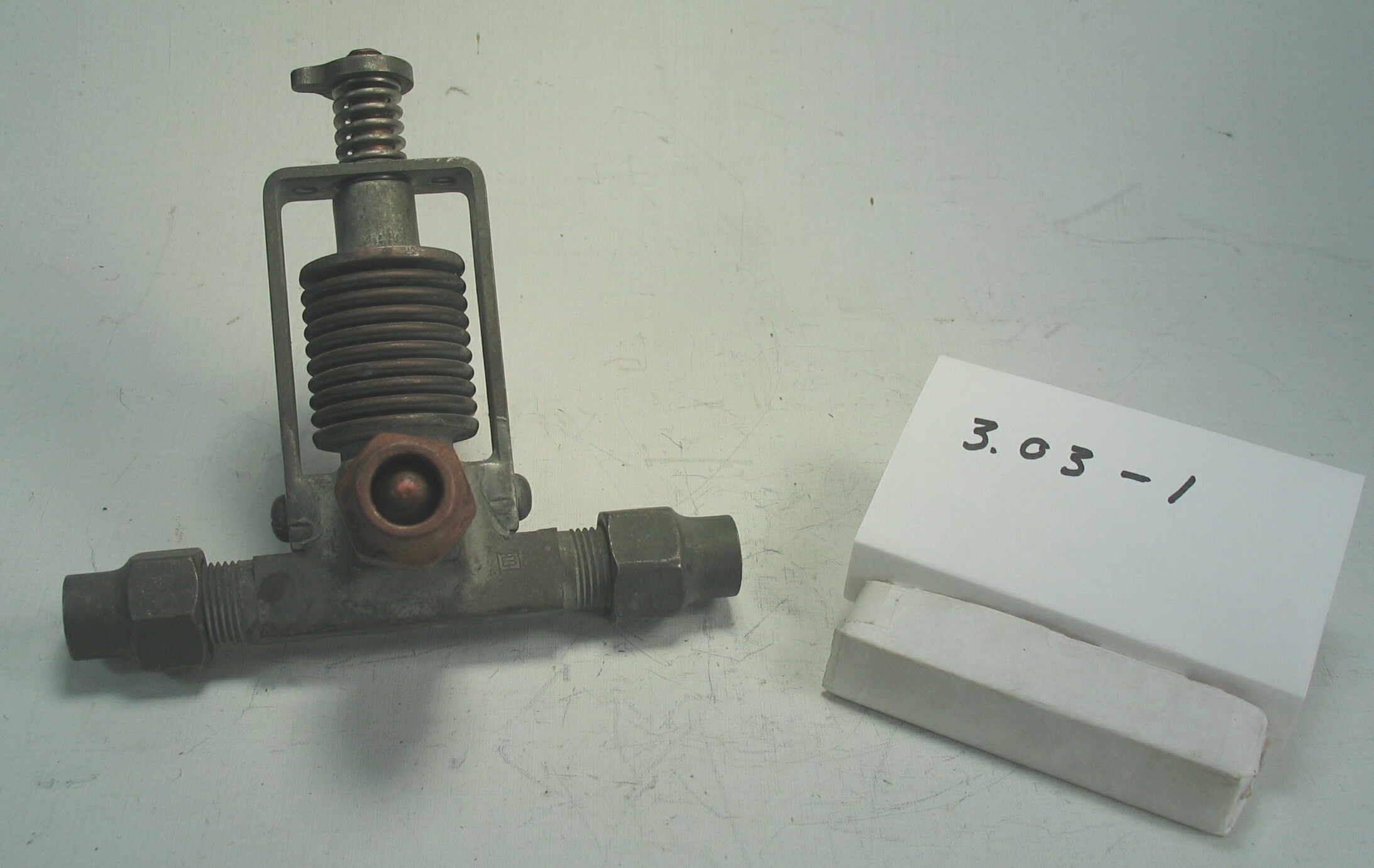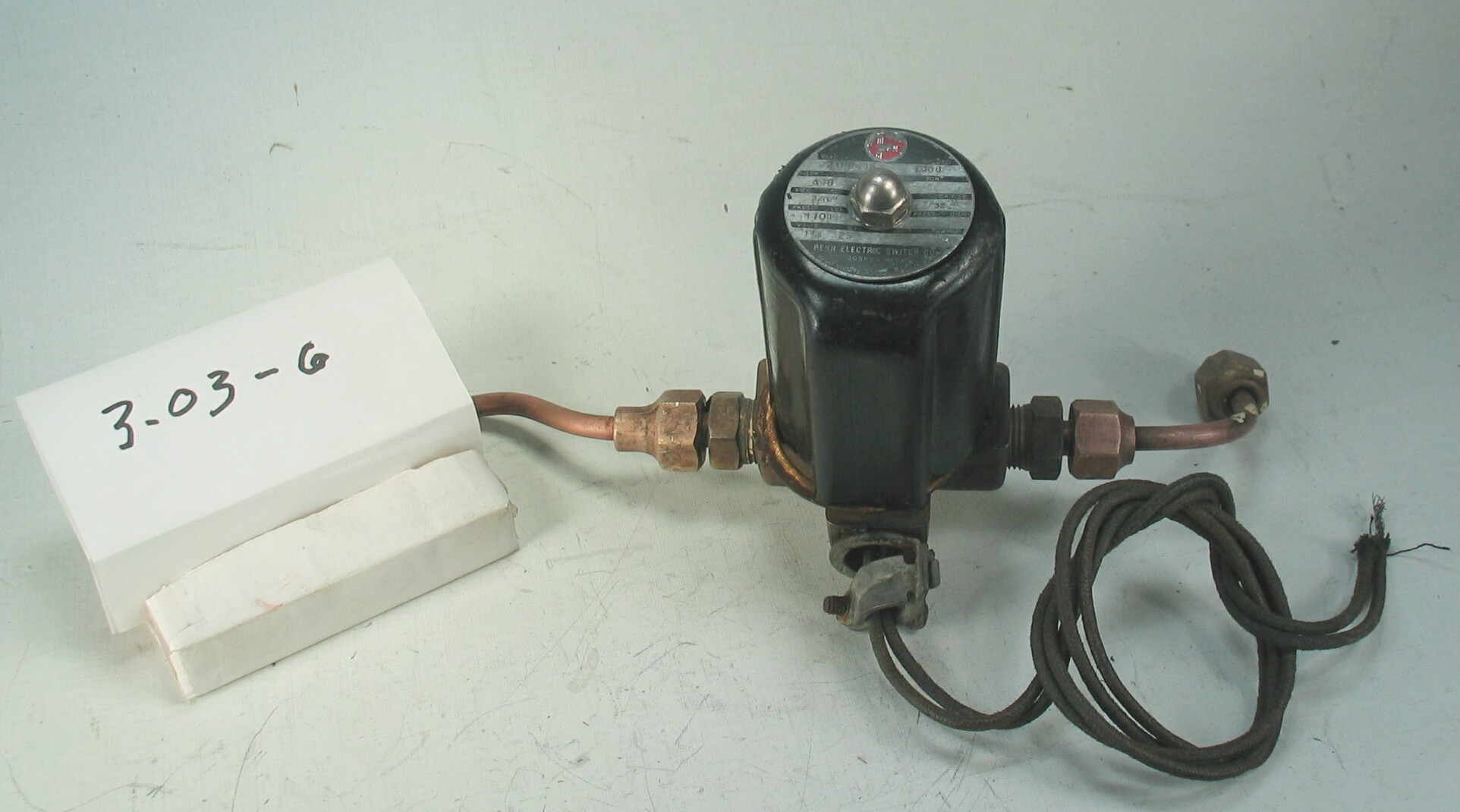3.03-3: Temprite 1952 Suction Pressure Regulating Valve
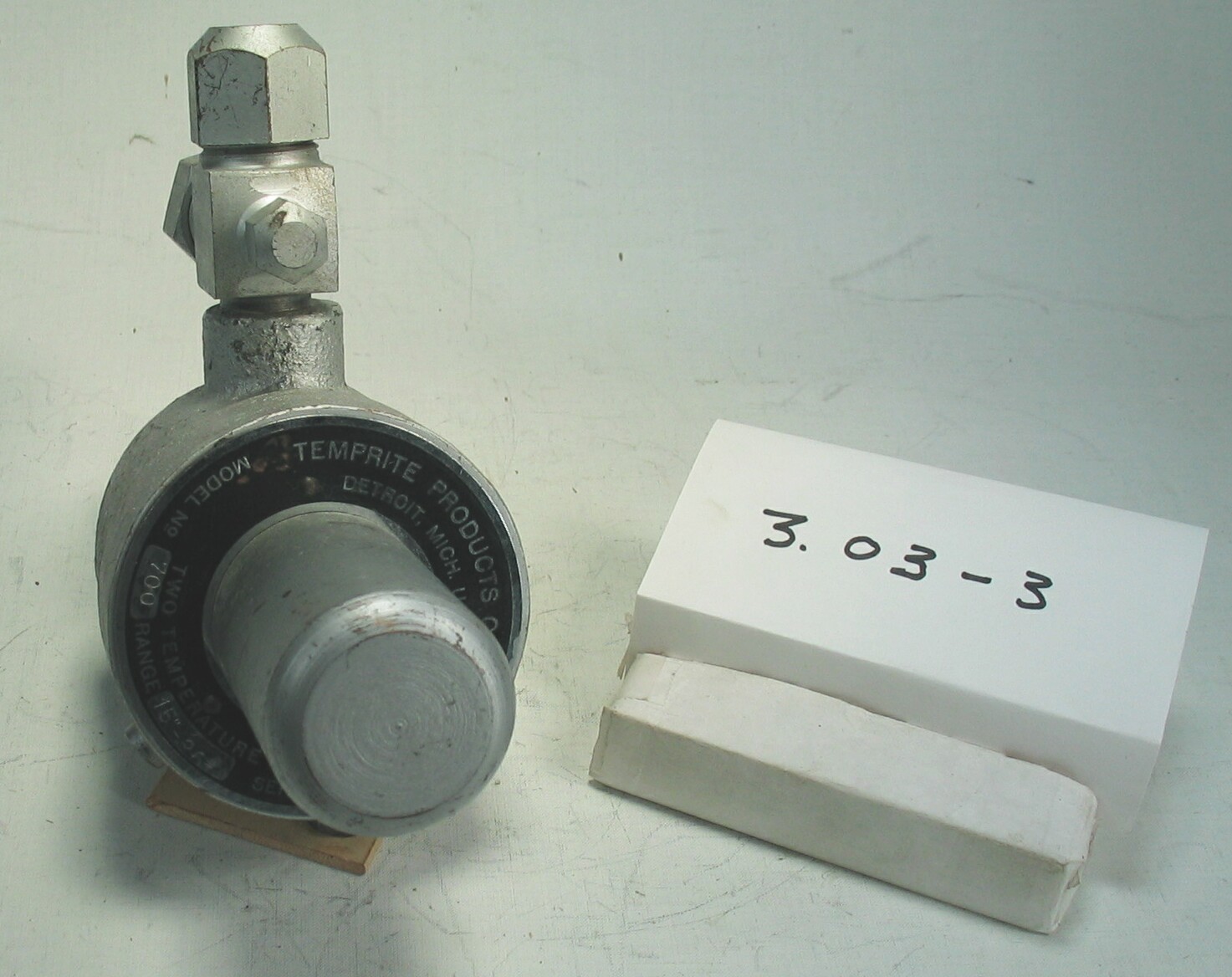
| HHCC Accession No. 2006.070 | HHCC Classification Code: 3.03-3 |
|---|
Description:
A mid 20th century, two temperature, fully adjustable, modulating suction pressure regulating valve engineered for instantaneous beverage cooling applications, including water, carbonated drinks and beer. Starting in the late 1920’s, such equipment would create and respond to a popular market for new tastes and human pleasures, one founded on the perennial human desire for fresh new pleasurable experiences, among the best that the 20th century Canada life could offer. Such pleasures were often shamelessly promoted through the hyperbola employed by the industry, as part of the times, Temprite 1952.
Group:
3.03 Refrigerant Flow Controls - NEC
Make:
Temprite
Manufacturer:
Temprite Products, Detroit Mich.
Model:
700
Serial No.:
73-252
Size:
6 x 3 x8’ h
Weight:
5 lbs.
Circa:
1952
Rating:
Exhibit, education, and research quality, illustrating something of the expansion of the Canadian refrigeration industry by the mid 20th century, as it moved beyond the home to create new expectations of life’s pleasures awaiting the consumer, deliciously cold beverages.
Patent Date/Number:
Provenance:
From York County (York Region) Ontario, once a rich agricultural hinterlands, attracting early settlement in the last years of the 18th century. Located on the north slopes of the Oak Ridges Moraine, within 20 miles of Toronto, the County would also attract early ex-urban development, to be come a wealthy market place for the emerging household and consumer technologies of the early and mid 20th century.
This artifact was discovered in the 1950’s in the used stock of T. H. Oliver, Refrigeration and Electric Sales and Service, Aurora, Ontario, an early worker in the field of agricultural, industrial and consumer technology.
With original factory tag, Model 700
Type and Design:
Two temperature, fully adjustable, modulating suction pressure regulating valve
Construction:
Cast steel body with aluminium overcoat
Material:
Special Features:
Accessories:
Capacities:
Performance Characteristics:
Operation:
Control and Regulation:
Targeted Market Segment:
Commercial beverage market
Consumer Acceptance:
Merchandising:
By the early 1930’s it was clear that household refrigeration allowed new things to happen in Canada, both in the home and in the market place in Canada’s now rapidly evolving consumer culture. It was, in fact, recognized even by the late 1920’s that the refrigerator in the kitchen was much more than a mere technology of practical advantage, in matters of convenience, health and hygiene (see references below).
The home refrigerator was, above all, to be promoted as an “experiential” technology, one allowing and facilitating a whole new range of human experience. The household refrigerator brought with it into the home many new cultural meanings to be explored by the family. There to be explored were: 1. new tastes, 2. greater range of foods and gastronomic experiences, 3. potential for creative and elaborated menus, and 4.new opportunities and challenges for the home maker in caring for family [see illustrations in references below].
Market Price:
Technological Significance:
Industrial Significance:
By the early 1930’s, the refrigeration industry, recognizing the potential of beverage cooling, as an area of speciality, in a then rapidly growing industry, spawned a number of speciality companies, in order to take advantage of what appeared to be a lucrative market segment.
In the early 1930’s,Temprite beverage coolers, manufactured by the Liquid Cooler Corporation, Detroit Mich, became a recognised market leader, an amazing range of specialised products quickly followed [See bibliographic references below].
Among the applications promoted by Temprite were: water coolers for office buildings, offices, hotels, restaurants, factories, hospitals, apartment houses, and barbershops for cold towels, cooling brine for circulation in fur storage refrigerators
Socio-economic Significance:
Theme: The Use of Hyperbola in Appealing to Canadian Values and Perceived Needs starting in the 1920’s ‘ Amid the relative hardship and austerity of the pioneer and early settlement conditions prevailing across Canada in the 1920’s, the refrigerator in the Canadian home would soon take on special cultural and social meaning and significance (see 1, above). And the inventors, engineers and manufacturers of the period knew it and made best use of the fact to promote their wares.
Hyperbola (exaggeration for the purposes of effect) has always been a principle strategy for the selling of consumer products and progressively shaping a culture of consumption. The many aspects of a product, which were assumed to be of value to the consumer, were thus made the subject of exaggeration, a technique apparently well developed as early as 1929 (ref. p. 13
14).
Hyperbola, much more than true utility and advantage of what was being hyped, would quickly become the principal driving force of Canada's consumer cultural revolution. The changes associated with the explosion of popular technology and its vastly accelerated rate of consumption would soon quickly alter Canadian popular culture and society.
Selling mechanical refrigeration equipment was done through appeal to: 1) health, safety and hygiene, 2) fragileness, 3) improved comfort conditions, 4) life style alternatives, 5) quality, 6) durability, 7) efficiency, 8) meeting needs for a more visually pleasing home, including the appeal to "modern" styling and aesthetics, and 9) appeal to the novel, to features as needed functionality, and to functionality as convenience and implied utility [see references below]
Socio-cultural Significance:
Donor:
G. Leslie Oliver, The T. H. Oliver HVACR Collection
HHCC Storage Location:
Tracking:
Bibliographic References:
Some illustrations of the promotion of fresh new human experience 1.1 learning to “cook with cold” receipts by Kelvinator, (doc. #7, p. 10 11) 1.2 cooking classes by Kelvinator (doc. #10, April 1930, p. 7) 1.3 promoting images of the visually appealing and healthful foods the “Kelvin Cooler” (doc #8, May 22, 1930; doc. # 2, form C3999, March 30, 1930)
1.4 promoting “bubbling water” by Kelvinator, as a symbol of a new fun life style for all ( June 23, 1930, Nov. 10, 1930). 1.5 new ways to care for the family (doc. #13)
Some Illustrations, the use of hyperbola: 2.1 better food preservation, processing and diet as matters of public health, safety, and frugalness (doc. #18, all, 1933) 2.2 “Kelvinator is Best”, quality, durability, efficiency (doc. #15, last 11 pages, 1932) 2.3 science as a source of the ultimate good, science in the service of humankind Lord Kelvin as recognized benefactor (doc. #10, April 1930, p. 9) 2.4 manufacturers of household refrigerators as public benefactors, with a mission (often genuinely felt) in matters of the common good (doc. #10, Feb. 1932)
Bibliographic References:
Kelvinator Serviice Manual Commercial Section, 1929, Kelvinator sales Corp. Service Dept. Kelvinator of Canada Kelvinator, Temprite Coolers, 1929, Liquid Coller Corp.
Marshall Refrigeration Co. Catalogue No 30, PP, 88-89
Notes:
- See also item #192, 3.03-1
